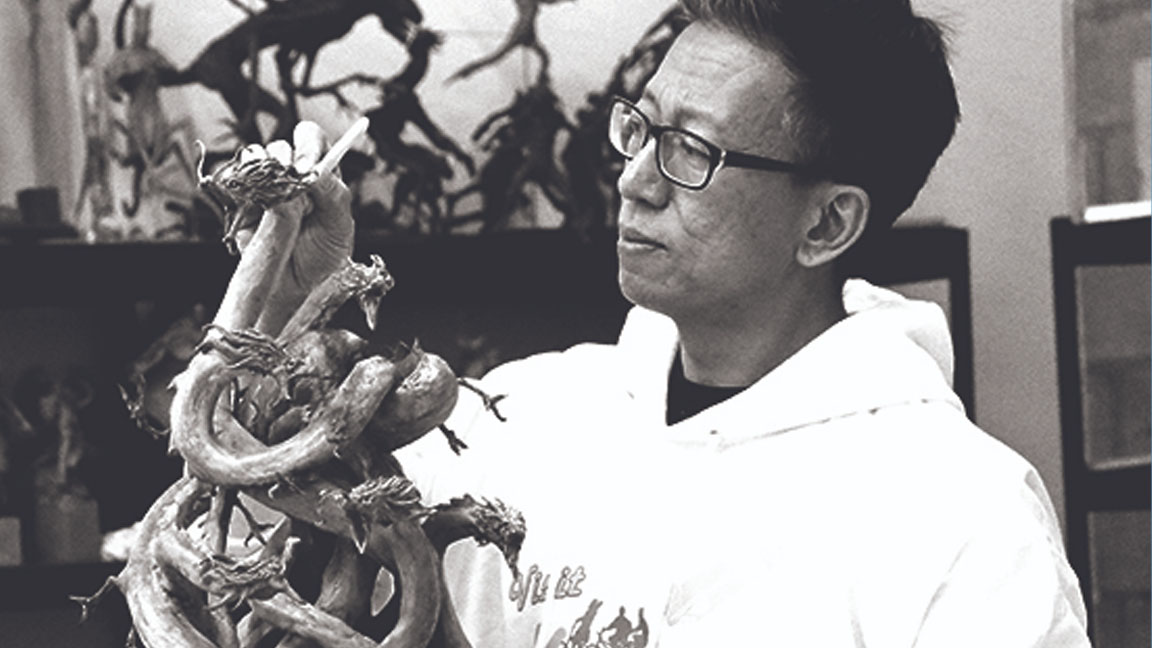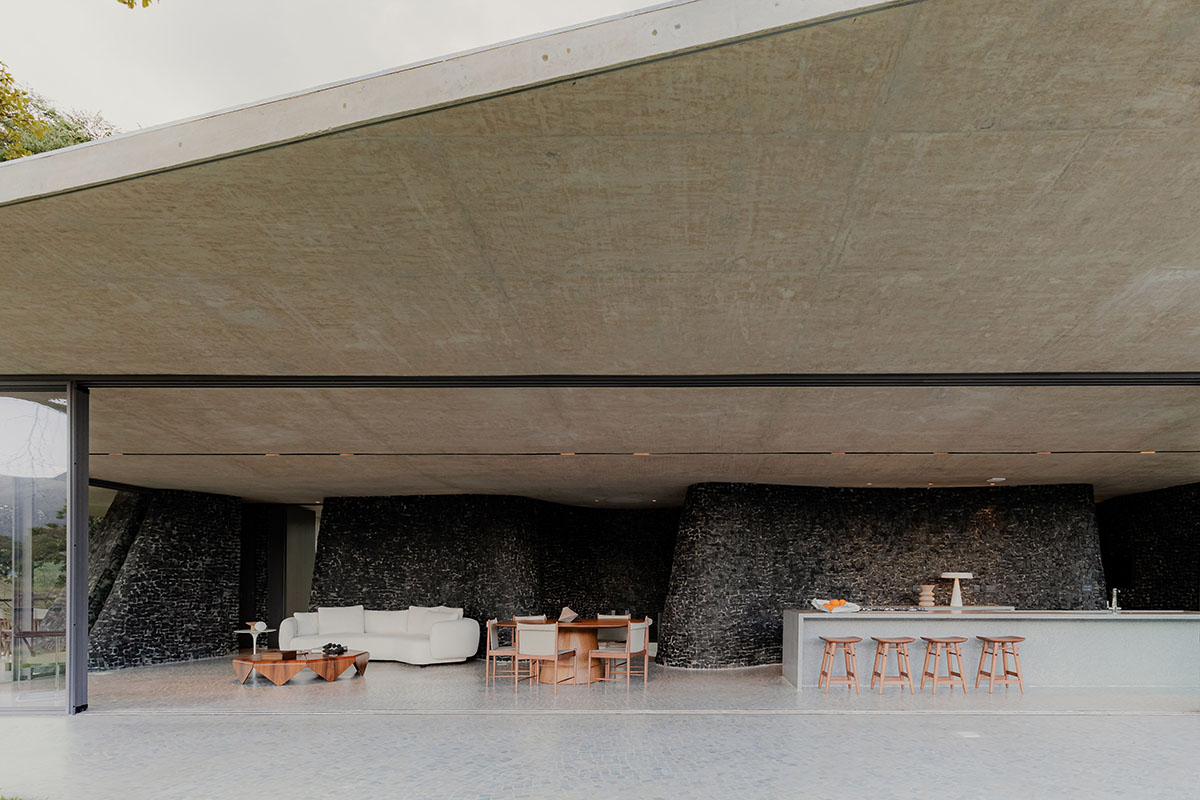The Drinking Fountain of La Arboleda by Luis Barragán: Water, Memory, and Geometry
Drinking Fountain of La Arboleda| 1970s Photograph
Luis Barragan’s work is often celebrated for its profound dialogue between form, memory, and landscape. In the Drinking Fountain of La Arboleda, Barragán channels these core principles into a singular architectural gesture. Situated at the culmination of the Paseo de los Gigantes, this fountain transcends utilitarian function to become a space of contemplation and poetic reflection.
Drinking Fountain of La Arboleda Technical Information
Architects1-2: Luis Barragán
Location: Avenida Paseo de los Gigantes, Las Arboledas, Mexico
Height: 14.6 meters
Width: 10.4 meters
Project Years: 1960s
Plans by: Enrique Delgado Camara
In Las Arboledas I had the pleasure of building a large rectangular pond among eucalyptus trees; however, while doing so, I thought of Persian gardens, I also thought of De Chirico, I also thought that water is a mirror, and I liked that it reflected the branches of the trees. You know, popular architecture has always impressed me because it is pure truth and because the spaces that occur in plazas, in porticos, in courtyards, are always given with generosity.
– Luis Barragán
Drinking Fountain of La Arboleda Photographs
Drinking Fountain of La Arboleda| 1970s Photograph
1970s Photograph
1970s Photograph
1970s Photograph
1970s Photograph
Spatial Composition and Geometric Manipulation
The project extends Barragán’s broader explorations in Las Arboledas and Los Clubes, developments marked by an intimate relationship with nature and a restrained formal language. Here, water becomes material and metaphor, shaping a spatial experience that is as much about the mind as the body.
The Drinking Fountain of La Arboleda is defined by the dynamic interplay of two elements: a towering white wall and a long, linear water trough. The wall, rising to a height of 14.6 meters, asserts its presence in the landscape as a vertical marker. It competes with, yet does not overshadow, the surrounding eucalyptus trees. The water trough, measuring 44 meters in length, 2.55 meters in width, and 0.67 meters in height, extends along the path in a measured horizontal counterpoint.
This juxtaposition of vertical and horizontal geometries establishes a composition of duality. The white wall commands attention from afar, while the dark basin of water, offset to the side, quietly draws in the viewer’s gaze. The deliberate misalignment of these two forms prevents a static symmetry, generating a subtle sense of movement and tension within the space.
Barragán’s manipulation of circulation further reinforces this dynamic quality. Rather than a direct approach, entry to the plaza is orchestrated through a series of turns. These indirect paths obscure the view and gradually reveal the fountain, heightening the sense of arrival and emphasizing the experiential choreography of the approach.
Materiality and Sensory Qualities
Material choices are critical in the fountain’s ability to evoke stillness and dynamism. The white stucco of the wall acts as a canvas for the interplay of light and shadow, particularly as the sun filters through the towering eucalyptus canopy. This shifting luminosity imbues the space with a living quality, constantly animated by the rhythms of the day.
The basin of the fountain is constructed from dark anthracite, lending the water a reflective depth that absorbs and mirrors the surrounding environment. The edge of the water, defined by precisely cut, sharp-edged walls, creates an illusion of the water as a freestanding volume. This interplay of light, shadow, and reflection intensifies the perception of depth, dissolving the boundary between container and contained.
The gentle sound of water flowing over the basin’s edge adds a sonic dimension to the experience. It serves as a subtle counterpoint to the plaza’s otherwise hushed atmosphere, enhancing the sensory richness without disrupting the meditative calm.
Drinking Fountain of La Arboleda Cultural Resonance
In this project, Barragán evokes a memory of rural Mexico that resonates with personal nostalgia and collective cultural imagery. The trough recalls the water basins of his childhood, echoing the hacienda landscapes and the enduring significance of water in Mexican life. Yet, by abstracting these elements into minimalist forms, he situates them within a modern architectural discourse that transcends mere historicism.
Barragán’s insistence on the evocative power of space is evident in every aspect of the Drinking Fountain. It is a site of transition, marking the end of the linear paseo while simultaneously inviting introspection and pause. The project’s restrained materiality and precise spatial articulation distill Barragán’s belief in architecture as a vehicle for personal reflection and cultural continuity.
His 1980 Pritzker Prize acceptance speech, in which he described his enduring fascination with water and the memories of fountains and acequias, underscores this deep personal connection. The Drinking Fountain of La Arboleda can be read as an architectural meditation on that theme. This work bridges the abstraction of modernism with the rich, elemental forces of the Mexican landscape.
Drinking Fountain of La Arboleda Plans
Floor Plan | © Enrique Delgado Camara
Axonometric View | © Enrique Delgado Camara
Drinking Fountain of La Arboleda Image Gallery
About Luis Barragán
Luis Barragánwas a Mexican architect renowned for his masterful integration of light, color, and landscape into architecture. His work blends modernist abstraction with deeply rooted Mexican traditions, crafting spaces that evoke memory, contemplation, and poetic resonance.
Credits and Additional Notes
Water TroughLength: 44 meters
Water TroughWidth: 2.55 meters
Water TroughHeight: 0.67 meters
Material: Anthracite-colored stoneDelgado Cámara, Enrique. La Geometría del Agua: Mecanismos Arquitectónicos de Manipulación Espacial. Enrique Delgado Cámara, 2024.
Ambasz, Emilio. The Architecture of Luis Barragán. Museum of Modern Art, New York, 1976.
#drinking #fountain #arboleda #luis #barragánThe Drinking Fountain of La Arboleda by Luis Barragán: Water, Memory, and Geometry
Drinking Fountain of La Arboleda| 1970s Photograph
Luis Barragan’s work is often celebrated for its profound dialogue between form, memory, and landscape. In the Drinking Fountain of La Arboleda, Barragán channels these core principles into a singular architectural gesture. Situated at the culmination of the Paseo de los Gigantes, this fountain transcends utilitarian function to become a space of contemplation and poetic reflection.
Drinking Fountain of La Arboleda Technical Information
Architects1-2: Luis Barragán
Location: Avenida Paseo de los Gigantes, Las Arboledas, Mexico
Height: 14.6 meters
Width: 10.4 meters
Project Years: 1960s
Plans by: Enrique Delgado Camara
In Las Arboledas I had the pleasure of building a large rectangular pond among eucalyptus trees; however, while doing so, I thought of Persian gardens, I also thought of De Chirico, I also thought that water is a mirror, and I liked that it reflected the branches of the trees. You know, popular architecture has always impressed me because it is pure truth and because the spaces that occur in plazas, in porticos, in courtyards, are always given with generosity.
– Luis Barragán
Drinking Fountain of La Arboleda Photographs
Drinking Fountain of La Arboleda| 1970s Photograph
1970s Photograph
1970s Photograph
1970s Photograph
1970s Photograph
Spatial Composition and Geometric Manipulation
The project extends Barragán’s broader explorations in Las Arboledas and Los Clubes, developments marked by an intimate relationship with nature and a restrained formal language. Here, water becomes material and metaphor, shaping a spatial experience that is as much about the mind as the body.
The Drinking Fountain of La Arboleda is defined by the dynamic interplay of two elements: a towering white wall and a long, linear water trough. The wall, rising to a height of 14.6 meters, asserts its presence in the landscape as a vertical marker. It competes with, yet does not overshadow, the surrounding eucalyptus trees. The water trough, measuring 44 meters in length, 2.55 meters in width, and 0.67 meters in height, extends along the path in a measured horizontal counterpoint.
This juxtaposition of vertical and horizontal geometries establishes a composition of duality. The white wall commands attention from afar, while the dark basin of water, offset to the side, quietly draws in the viewer’s gaze. The deliberate misalignment of these two forms prevents a static symmetry, generating a subtle sense of movement and tension within the space.
Barragán’s manipulation of circulation further reinforces this dynamic quality. Rather than a direct approach, entry to the plaza is orchestrated through a series of turns. These indirect paths obscure the view and gradually reveal the fountain, heightening the sense of arrival and emphasizing the experiential choreography of the approach.
Materiality and Sensory Qualities
Material choices are critical in the fountain’s ability to evoke stillness and dynamism. The white stucco of the wall acts as a canvas for the interplay of light and shadow, particularly as the sun filters through the towering eucalyptus canopy. This shifting luminosity imbues the space with a living quality, constantly animated by the rhythms of the day.
The basin of the fountain is constructed from dark anthracite, lending the water a reflective depth that absorbs and mirrors the surrounding environment. The edge of the water, defined by precisely cut, sharp-edged walls, creates an illusion of the water as a freestanding volume. This interplay of light, shadow, and reflection intensifies the perception of depth, dissolving the boundary between container and contained.
The gentle sound of water flowing over the basin’s edge adds a sonic dimension to the experience. It serves as a subtle counterpoint to the plaza’s otherwise hushed atmosphere, enhancing the sensory richness without disrupting the meditative calm.
Drinking Fountain of La Arboleda Cultural Resonance
In this project, Barragán evokes a memory of rural Mexico that resonates with personal nostalgia and collective cultural imagery. The trough recalls the water basins of his childhood, echoing the hacienda landscapes and the enduring significance of water in Mexican life. Yet, by abstracting these elements into minimalist forms, he situates them within a modern architectural discourse that transcends mere historicism.
Barragán’s insistence on the evocative power of space is evident in every aspect of the Drinking Fountain. It is a site of transition, marking the end of the linear paseo while simultaneously inviting introspection and pause. The project’s restrained materiality and precise spatial articulation distill Barragán’s belief in architecture as a vehicle for personal reflection and cultural continuity.
His 1980 Pritzker Prize acceptance speech, in which he described his enduring fascination with water and the memories of fountains and acequias, underscores this deep personal connection. The Drinking Fountain of La Arboleda can be read as an architectural meditation on that theme. This work bridges the abstraction of modernism with the rich, elemental forces of the Mexican landscape.
Drinking Fountain of La Arboleda Plans
Floor Plan | © Enrique Delgado Camara
Axonometric View | © Enrique Delgado Camara
Drinking Fountain of La Arboleda Image Gallery
About Luis Barragán
Luis Barragánwas a Mexican architect renowned for his masterful integration of light, color, and landscape into architecture. His work blends modernist abstraction with deeply rooted Mexican traditions, crafting spaces that evoke memory, contemplation, and poetic resonance.
Credits and Additional Notes
Water TroughLength: 44 meters
Water TroughWidth: 2.55 meters
Water TroughHeight: 0.67 meters
Material: Anthracite-colored stoneDelgado Cámara, Enrique. La Geometría del Agua: Mecanismos Arquitectónicos de Manipulación Espacial. Enrique Delgado Cámara, 2024.
Ambasz, Emilio. The Architecture of Luis Barragán. Museum of Modern Art, New York, 1976.
#drinking #fountain #arboleda #luis #barragán















